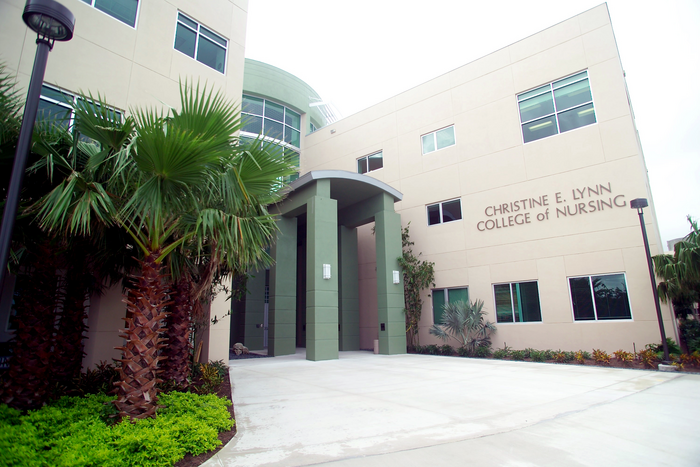Physical activity is important for healthy aging. It helps prevent functional decline, frailty, falls, and chronic conditions such as diabetes and cardiovascular disease. Regular physical activity also contributes to quality of life and reduced depression.

Credit: Alex Dolce, Florida Atlantic University
Physical activity is important for healthy aging. It helps prevent functional decline, frailty, falls, and chronic conditions such as diabetes and cardiovascular disease. Regular physical activity also contributes to quality of life and reduced depression.
Despite these known health benefits, older adults seldom meet the physical activity guidelines of 150 minutes per week of moderate activity. Many factors affect physical activity levels among older adults. Moreover, little is known about the differences in physical activity among various racial and ethnic groups.
Researchers from Florida Atlantic University’s Christine E. Lynn College of Nursing, in collaboration with Florida International University, conducted a unique study using a robust statistical approach to analyze the factors related to physical activity in a diverse sample of older adults.
The study sample included 601 African Americans, Afro-Caribbeans, European Americans and Hispanic Americans ages 59 to 96 living independently. While prior studies have addressed the question of factors influencing older adults’ physical activity levels, none have employed the large range of instruments/tools used in this study or included older adults from multiple ethnic groups.
Results of the study, published in the journal Geriatrics, showed that age, education, social network, pain and depression were the five factors that accounted for a statistically significant proportion of unique variance in physical activity in this diverse, community dwelling older population.
Participants who reported lower physical activity tended to be older, have less years of education and reported lower social engagement, networking, resilience, mental health, self-health rating, and higher levels of depression, anxiety, pain, and body mass index (BMI) compared to the moderate to high physical activity groups.
A secondary analysis examined factors associated with calculated MET-h/week (ratio of the rate at which a person expends energy relative to the mass of that person). Findings showed the strongest correlation to MET-h/week was with depression.
“Four of the five significant predictors of physical activity in the older adults we studied are at least partially modifiable. For example, social network, depression and pain can be ameliorated by physical activity,” said Ruth M. Tappen, Ed.D., RN, FAAN, senior author and the Christine E. Lynn Eminent Scholar and professor in the Christine E. Lynn College of Nursing.
Researchers found that pain was associated with less time spent being physically active. What is not clear is whether older adults understand that sedentary lifestyles can promote and/or worsen some types of pain and physical activity can help to reduce pain or whether this knowledge alone is enough to motivate them to become more active.
“Education may be key both in helping older adults with depressive symptoms understand that physical activity can help reduce their symptoms and in helping them to identify the types of activity that they may find enjoyable,” said Tappen.
Study findings suggest that many of these factors could be addressed by designing and testing individual, group and community level interventions to increase physical activity in the older population. Researchers recommend education on the effect of activity on common sources of pain such as arthritis or back pain and encouraging health care providers to write a “prescription” for a daily walk or a workout for those with depression. In addition, community outreach to isolated older adults, improving the walkability of neighborhoods, repairing sidewalks, adding trails and making these areas safe to walk and work out are other interventions to help increase physical activity in the older population.
“Partnerships among local senior centers, low income housing developments, places of worship, YMCAs and health care providers are crucial in developing tailored multi-faceted programs for physically inactive older adults, especially those experiencing pain and/or depression,” said Tappen. “These programs can provide health-related education pertinent to the identified medical issues such as pain and depression and assist participants in meeting other participants and in developing specific physical activity-related goals, which are known to be associated with sustained involvement.”
Sociodemographic variables included age, sex, years of education, ethnic group membership, years living in the United States, and receipt of Medicaid based upon income level qualifications. Cognition was measured using the Mini-Mental State Exam. Psychosocial variables included social engagement, social network, resilience, personality, anxiety, depression, spirituality and the SF-36 mental health summary score. Physical measures included pain, BMI, body consciousness, functional ability and self-rating of health. Behavioral variables included adherence to prescribed medications and self-reported physical activity levels.
Study co-authors are David Newman, Ph.D., an associate professor and statistician; Sareen S. Gropper, Ph.D., a professor; and Cassandre Horne, a Ph.D. student, all in FAU’s Christine E. Lynn College of Nursing; and Edgar R. Viera, Ph.D., an associate professor in FIU’s Nicole Wertheim College of Nursing & Health Science.
This research was funded by the Health Aging Research Initiative (HARI), FAU sponsored programs (#N11-053) and the Retirement Research Foundation (Grant #180250).
– FAU –
About the Christine E. Lynn College of Nursing:
FAU’s Christine E. Lynn College of Nursing is nationally and internationally known for its excellence and philosophy of caring science. The College was ranked No.11 nationwide by U.S. News and World Report in 2021 for “Best Online Master’s in Nursing Administration Programs” and No. 32 for the “Best Online Master’s in Nursing Programs.” In 2020, FAU graduates earned a 95.9 percent pass rate on the National Council Licensure Examination for Registered Nurses (NCLEX-RN®) and 100 percent AGNP Certification Pass Rate. FAU’s Christine E. Lynn College of Nursing is fully accredited by the Commission on Collegiate Nursing Education (CCNE). For more information, visit nursing.fau.edu.
About Florida Atlantic University:
Florida Atlantic University, established in 1961, officially opened its doors in 1964 as the fifth public university in Florida. Today, the University serves more than 30,000 undergraduate and graduate students across six campuses located along the southeast Florida coast. In recent years, the University has doubled its research expenditures and outpaced its peers in student achievement rates. Through the coexistence of access and excellence, FAU embodies an innovative model where traditional achievement gaps vanish. FAU is designated a Hispanic-serving institution, ranked as a top public university by U.S. News & World Report and a High Research Activity institution by the Carnegie Foundation for the Advancement of Teaching. For more information, visit www.fau.edu.
Journal
Geriatrics
DOI
10.3390/geriatrics7050111
Method of Research
Data/statistical analysis
Subject of Research
People
Article Title
Factors Associated with Physical Activity in a Diverse Older Population
Article Publication Date
4-Oct-2022




